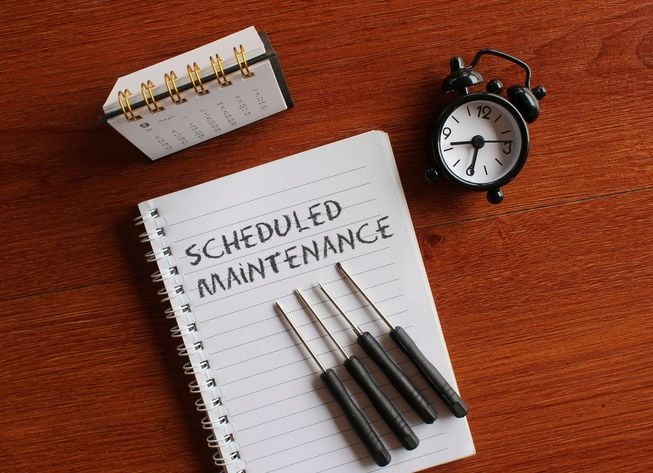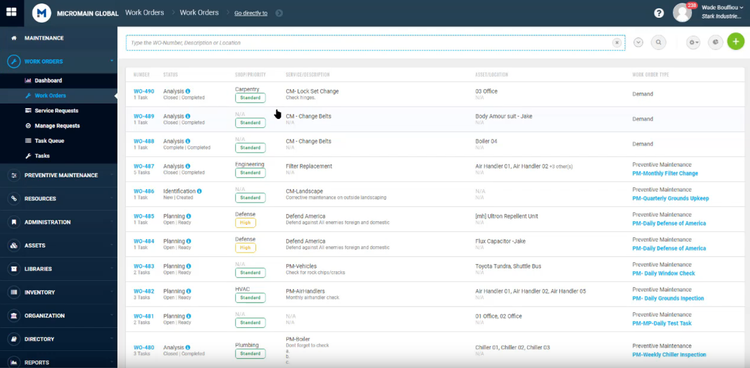What is a CMMS and How Does it Work?
A computerized maintenance management system CMMS is software that increases the lifespan of machinery or equipment systems by automating maintenance processes.
Any company dealing with regular maintenance needs, whether it’s high-end machinery or point-of-sale terminals, can benefit from implementing a CMMS system. Learn how this software can help your company increase equipment uptime and extend asset lifecycles:
What is CMMS?
Mostly used in manufacturing and related industries, these work order systems use comprehensive asset management, scheduled predictive and preventive maintenance alerts, and work order management to ensure the most important equipment is subject to maintenance tasks before a breakdown can happen.
Traditionally, a company might manage its maintenance workflows through written-out charts and spreadsheets. A clipboard might be passed around each shift detailing any performance changes amongst the equipment. With this limited data, supervisors and managers try to calculate when or if any preventive maintenance should be performed. Unfortunately, human error and miscalculation can lead to missed opportunities and equipment failure. For example, a handwritten note requesting maintenance can easily be overlooked during a shift change.
CMMS software commonly includes key features such as:
- Asset management
- Preventive and predictive maintenance
- Equipment inventory management
- Work order management

Primary Benefits
Alongside streamlining processes, CMMS has several benefits, including:
- Optimized Scheduling: CMMS systems can automatically generate maintenance calendars, letting users track of and monitor work requests. Automated notifications provide timely reminders for when preventative maintenance is due or when checkups are necessary.
- Lowers Total Cost of Maintenance: By tracking equipment accurately, a CMMS allows you to plan maintenance before expensive repairs are required, saving money on unexpected problems.
- Increased Asset Lifespan: The system records parts usage and their average lifespan, making sure they are adequately stocked to fix issues. Machine sensors can also provide metrics and identify problems before they occur–allowing maintenance work to be completed before an asset failure.
- Improved Safety: CMMS can identify the procedures and processes to stay compliant by setting up tasks that must be completed. This can also include scheduling qualified workers and untrained staff members for performance reviews to ensure their safety standards are up to par.
- Increased Productivity: CMMS work prevents asset breakdown, which can lead to unscheduled equipment downtime and a production shutdown. An unexpected assembly line shutdown can lead to missed production quotas and product shortages.

Examples of CMMS Use Cases
CMMS in Manufacturing
A car manufacturer works long hours to meet production deadlines. Machinery runs at all hours of the day, with no or limited rest periods between shifts. However, the constant work puts much strain on the already outdated equipment along the assembly line. Before long, machines start to malfunction or break down completely. The manufacturer is left with catastrophic failure by ignoring regular and preventative maintenance.
In the future, they can implement a CMMS to track which machinery needs minor repair and schedule predictive maintenance at ideal downtimes before breakdowns happen. The system will keep digital tabs on when maintenance was last performed, when inspections should be made, and which replacement parts are in stock and available.
CMMS in Retail
Cashiers experience slow load times with their POS system. They report the issues to a supervisor, who enters a maintenance request online through a cloud-hosted CMMS. An employee in IT or maintenance can then immediately know that potential issues need to be addressed and use the CMMS to forecast when there might be a convenient break in sales so that they can check over the POS terminal with minimal downtime.
Automatic reminders help all employees stay on top of scheduled maintenance. No more overlooked checklists with outdated asset information - the CMMS tracks it all instead. Each manually created maintenance order can generate a work request that is easily tracked so you know exactly what work comes next and plan accordingly.
Note: If you specifically want a CMMS for a fleet of vehicles, consider a fleet maintenance software system for a more vehicle-specific solution, for example, measuring tire tread and scheduling oil changes.
How is CMMS Different from EAM?
CMMS and EAM (enterprise asset management) systems are similar in function, as they both optimize equipment and asset maintenance. However, while EAM covers the entire asset lifecycle, CMMS is limited to asset maintenance management.
They include similar features, such as asset tracking, preventive maintenance, and inventory management. EAM offers broader functionality, like energy monitoring and equipment lifecycle management, and is tailored to enterprise-level companies.
Read More: CMMS vs. EAM: What’s the Difference?
CMMS Pricing
Selecting the right one for your business will largely depend on how many users you plan to have and which features you want. Most SaaS plans range between $30 and $70 per month per user, as per-user pricing is the most common model. Onboarding costs for these subscription-based pricing models will range from $600 to $2,500 upfront.
There are even several free CMMS options like MaintainX for small manufacturers and startups. However, these are limited in functionality, and most businesses will require a paid system.
